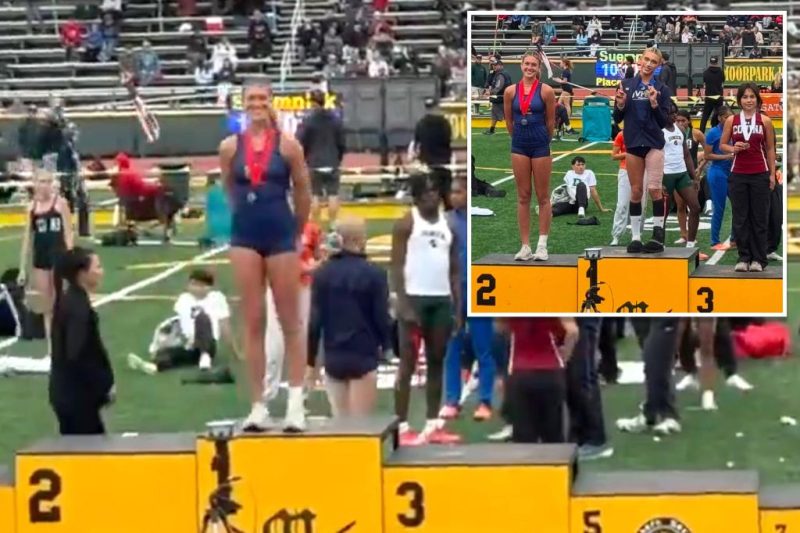
At the CIF Southern Section Finals, 16-year-old Reese Hogan achieved a personal best in the triple jump, leaping 37 feet, 2 inches. However, she finished second to a transgender athlete, AB Hernandez. Instead of accepting second place quietly, Hogan’s response has sparked a firestorm of debate.
After the awards ceremony concluded and the other athletes had left the podium, Hogan stepped onto the top spot, smiling for a photograph. This act was quickly praised by Riley Gaines, a former NCAA swimmer and outspoken critic of transgender participation in women’s sports. Gaines declared Hogan the “real” champion, highlighting what she sees as an unfair advantage granted to transgender athletes.
Gaines’s strong stance on social media, where she called Hernandez a “fraud” and criticized governing bodies for allowing the situation, further fueled the already intense discussion. The controversy extends beyond this single event; it highlights a larger national conversation about fairness and inclusion in women’s sports.
The incident also brought to light a previous protest at a preliminary track meet. Hogan and other female athletes wore “Protect Girls Sports” shirts, which were subsequently ordered removed by officials. While the CIF Southern Section stated that athletes must wear school-issued uniforms, witnesses claim that other athletes wearing non-uniform shirts were not similarly treated, suggesting a possible double standard.
The situation raises complex questions. Is it fair to allow transgender athletes to compete in women’s sports? How should governing bodies balance inclusion with the principle of fair competition? Hogan’s actions, while controversial, serve as a powerful symbol of the ongoing debate, and her story is sure to continue generating discussion and debate for some time to come. The conflict underscores the need for thoughtful policymaking and a broader societal conversation about gender, athletics, and the future of women’s sports.










